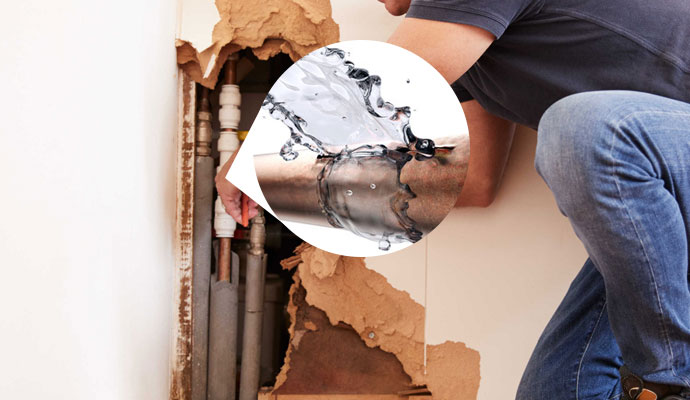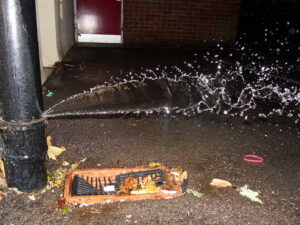Spotting and Quickly Fixing a Burst Pipe: Key Steps
Spotting and Quickly Fixing a Burst Pipe: Key Steps
Blog Article
What are your thoughts on What to Know Before Installing a Dishwasher?

A ruptured pipe is a major emergency; you can only stand as you view water you pay a lot to rejoin with the earth. In worse instances, you notice a pool on your kitchen area flooring, which is an excellent journey risk, specifically if you have children around. If the pipe that ruptured remained in your walls, problem: you may need to repaint that whole area.
Just how can a disaster like a burst pipeline be protected against and managed? Well, by paying attention to your specialist emergency plumbings as well as complying with these policies.
Just how do I recognize when my pipes have burst?
Varying water stress
Pipelines do not simply burst in a day. You might have seen that your kitchen tap or shower doesn't run instantly when you turn the faucet. It might stop for a couple of secs and then blast you with even more pressure than common.
In other instances, the water may appear regular at first, then drop in pressure after a couple of secs.
Contaminated water
Many people presume a burst pipe is a one-way outlet. Quite the contrary. As water spurts of the hole or gash in your plumbing system, contaminants find their way in.
Your water may be polluted from the resource, so if you can, examine if your water container has any kind of problems. However, if your drinking water is supplied and cleansed by the local government, you need to call your plumber quickly if you see or smell anything funny in your water.
Puddles under pipes and also sinks
When a pipeline ruptureds, the discharge creates a pool. It may appear that the puddle is growing in size, and also despite the number of times you wipe the puddle, in a few mins, there's one more one waiting to be cleaned up. Commonly, you might not have the ability to map the puddle to any type of visible pipes. This is an indicator to call an expert plumber.
Wet wall surfaces as well as water stains
Before a pipeline bursts, it will leakage, most times. If this consistent leaking goes unnoticed, the leakage may graduate right into a wide wound in your pipeline. One easy means to avoid this emergency is to keep an eye out for damp walls advertisement water stains. These water discolorations will certainly lead you right to the leak.
Untraceable trickling noises
Pipeline bursts can take place in one of the most unpleasant locations, like within concrete, inside walls, or under sinks. When your house goes silent, you might be able to listen to an irritatingly persistent leaking noise. Even after you have actually inspected your shower head and also cooking area tap, the leaking may proceed.
Precious reader, the trickling may be coming from a pipeline inside your walls. There isn't much you can do about that, other than tell an expert plumber.
Show up the Heat
Establish fans to blow heat right into cold areas. Keep the garage door shut. If you have lowered water flow, warmth one of the most vulnerable pipelines (typically in cellars as well as crawl spaces or near exterior wall surfaces) with a hair dryer. Leave the tap on while you apply warmth. As you melt ice, the circulation will raise. To avoid pipelines from cold, insulate your wall surfaces.
Start Removing the Water
Get the wipe, buckets and also a shop vacuum cleaner to start to do away with the water since you certainly do not want it saturating into every little thing else in the house. Plus, a quick tidy up will lower the chances of something getting moldy.
What do I do when I detect a burst pipeline?
Your water meter will continue to run even while your water wastes. To decrease your losses, discover the major controls and turn the supply off. The water pipe are an above-ground structure at the edge of your property.
How to Fix & Detect a Leaking Pipe
How Do I Know if a Pipe is Leaking?
Leak detection tests can help you determine if your pipe has a leak. Even if you don’t see an apparent leak, you should still conduct leak detection tests regularly to save water and money—and prevent major damage to your home.
Water meter. It can be helpful to figure out what your usual water meter usage numbers are and then monitor them regularly. To monitor your meter, first, turn off all water faucets in your home. Check the meter and write down the numbers. In a few hours, check the meter again. If the numbers have changed, you have a leak. Water gauge. Use a water gauge to test your water pressure. Your showerhead should produce a certain amount of water pressure based on its model and design. If the pressure is lower than it is supposed to be for that specific showerhead, your home likely has a leak. Puddles. Look inside your bathroom, laundry, and kitchen sink cabinets. Puddles around the cabinets or around toilets, tubs, showers, and washing machines indicate the presence of a leaking pipe. You may also notice loose tiles, peeling or flaking paint, or mold caused by water accumulation. Napkin test. Even if you don’t see any puddles, you may still have a leak. You can test for water leaks in the bathroom, laundry, and kitchen by wiping below-sink connections with a napkin, paper towel, or piece of toilet paper. If it becomes damp, you probably have a leaking pipe under the sink. Discolored walls. Walls that are discolored—usually with brown or yellow stains—or bulging might mean that they have been impacted by water damage caused by a leaking pipe. Smell. A leaky pipe will create sitting water, and over time, that water may develop a musty smell. If your home smells musty, but you can’t locate the source, it may be due to a leak. Steps for Fixing a Leaking Pipe
A leaky drain can be remedied by tightening the pipe base, replacing the drain seal, caulking the rim, and tightening the pipe nut. Similarly, a leaking toilet pipe can be treated by tightening the packing nut. You may also need to replace the valve. A leaky faucet may just need tightening or replacement of the washers. If that doesn’t work, consider replacing your faucet. If your pipe has a hole in it, you may want to use a pipe leak sealer or pipe leak tape. This quick fix for water pipe leaks can also temporarily fix a copper pipe leak. https://www.ahs.com/home-matters/quick-tips/how-to-tell-if-pipes-are-leaking/

I ran across that content on How to install a dishwasher safely when doing a lookup on the internet. So long as you appreciated our post please make sure you remember to pass it around. Thank-you for going through it.
Plumbing emergency? We're ready. Report this page